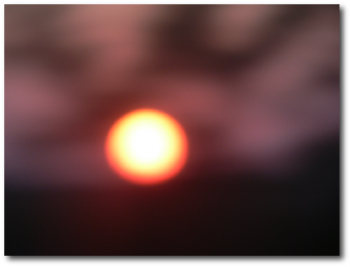
Image Source.
Ronald Reagan, while campaigning for Governor of California in 1966, explained his opinion regarding the need for a national park to protect old-growth redwood trees:
I think, too, that we’ve got to recognize that where the preservation of a natural resource like the redwoods is concerned, that there is a common sense limit. I mean, if you’ve looked at a hundred thousand acres or so of trees — you know, a tree is a tree, how many more do you need to look at?
One might think that this particular sentiment could be readily extended to the short-period planets. I mean, if you’ve seen one hot Jupiter you’ve seen ’em all, right?
Remarkably, that doesn’t seem to be the case. Two articles published today in Nature suggest that there exists a huge diversity in the atmospheric properties of hot Jupiters, even when they are placed in fairly similar radiation environments.
The first result comes from Knutson et al., who used the 8-micron channel of the IRAC camera on Spitzer to monitor the transiting planet HD 189733b for 33.1 hours straight. HD 189733 b is the nearest known transiting hot Jupiter, and is extremely well suited to examination by Spitzer. The observations started just before the primary transit, and ended just after the secondary transit (when the planet goes behind the star). The light curve, lifted right out of their paper, looks like this:
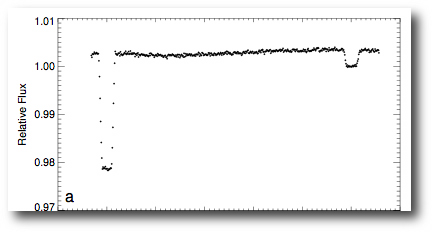
It’s clear that the signal-to-noise is amazing. Replotting the data at a scale appropriate to the secondary transit, one can see the variation in flux coming from the planet during the course of the orbit:
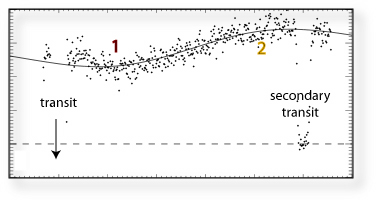
There’s an interesting increase in brightness just after the transit, and the planet reaches its maximum brightness before the secondary transit occurs. Knutson et al.’s fit to this data indicates that both the hottest spot (b) and the coolest spot (d) lie on the Eastern hemisphere of the planet. The planet is almost certainly in synchronous rotation, and so the hot spot is thus located ~30 degrees east of the substellar point, with the cold spot ~30 degrees west of the antistellar point.
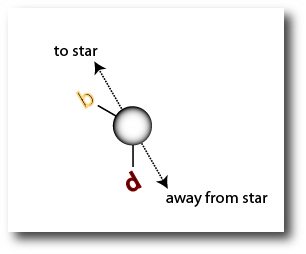
Here’s a diagram to help interpret what’s going on in the light curve:
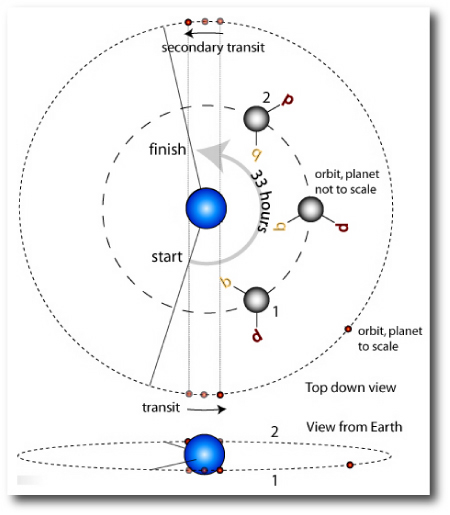
We’re in the midst of running simulations with Jonathan Langton’s hydrodynamics code to see how well our model matches the Knutson et al. data. It’s clear, however, that advection of heat by winds on the surface is likely playing an important role.
The temperature difference between the hot spot and the cold spot for HD 189733 b is ~350 K, which indicates that the planet is doing a fairly good — but not perfect — job of equilbrating its day and night side temperatures. Equilibration does not, however, appear to be the order of the day on HD 149026 b. Harrington et al., in their Nature paper, measured HD 149026‘s 8-micron flux before, during, and after the secondary transit. The secondary transit turned out to be remarkably deep, indicating that the planet is glowing very brightly in the 8-micron band. If the 8-micron emission is interpreted as arising from a blackbody, then the temperature of the substellar hemisphere is an incredibly hot 2300 K. This is more than 1000K hotter than the substellar hemisphere of HD 189733 b.
The huge 8-micron flux observed for HD 149026 turns out to be very much in line with predictions that Mark Marley, Jonathan Fortney and collaborators have issued for this particular planet (see here for their Fortney et. al 2006 paper). In their model for HD 149026b, the stratosphere of this highly metal-enriched planet is richly endowed with titanium oxide gas. The titanium oxide molecules act to quickly and efficiently re-emit the vast majority of the energy that the planet receives from the star, leading to scaldingly endless day and a (relatively) cool night.

The fluid helium of time remained on how much for Spitzer?